Construction safety, upheld and enforced by safety managers in the construction field, is a core principle. It emerges from the responsible use of equipment, safeguarding workers against potential dangers, regular site evaluations, and thorough risk assessments. A pivotal element of construction site safety is adherence to regional safety and health regulations.
Although the initial motivation for enhancing construction site safety often stems from the need to comply with workplace safety and health regulations, there are numerous additional advantages to giving precedence to this aspect. These include the reduction of safety risks and incidents, a matter of utmost importance because such occurrences can tarnish a company’s reputation within the industry and with regulatory bodies. Furthermore, they can lead to substantial financial burdens for the company.
In the United States, the maximum penalty for most types of OSHA violations is $13,653 per violation. However, in the case of a willful or repeated OSHA violation, this penalty skyrockets to over ten times that amount at $136,532 per violation. Simultaneously, incidents resulting in injuries or illnesses come with both direct and indirect expenses. OSHA estimates that employers bear nearly $1 billion per week solely in direct workers’ compensation costs.
Direct costs related to incidents resulting in injuries or illnesses encompass medical expenditures and legal fees, whereas indirect costs encompass the training of replacement or substitute workers, repairs to damaged equipment or property, diminished productivity and decreased worker morale.
Another advantage of prioritizing construction site safety is the fortification of trust among workers, safety managers in construction, and corporate executives. This heightened level of trust fosters improved communication across the organization, resulting in fewer misunderstandings and conflicts.
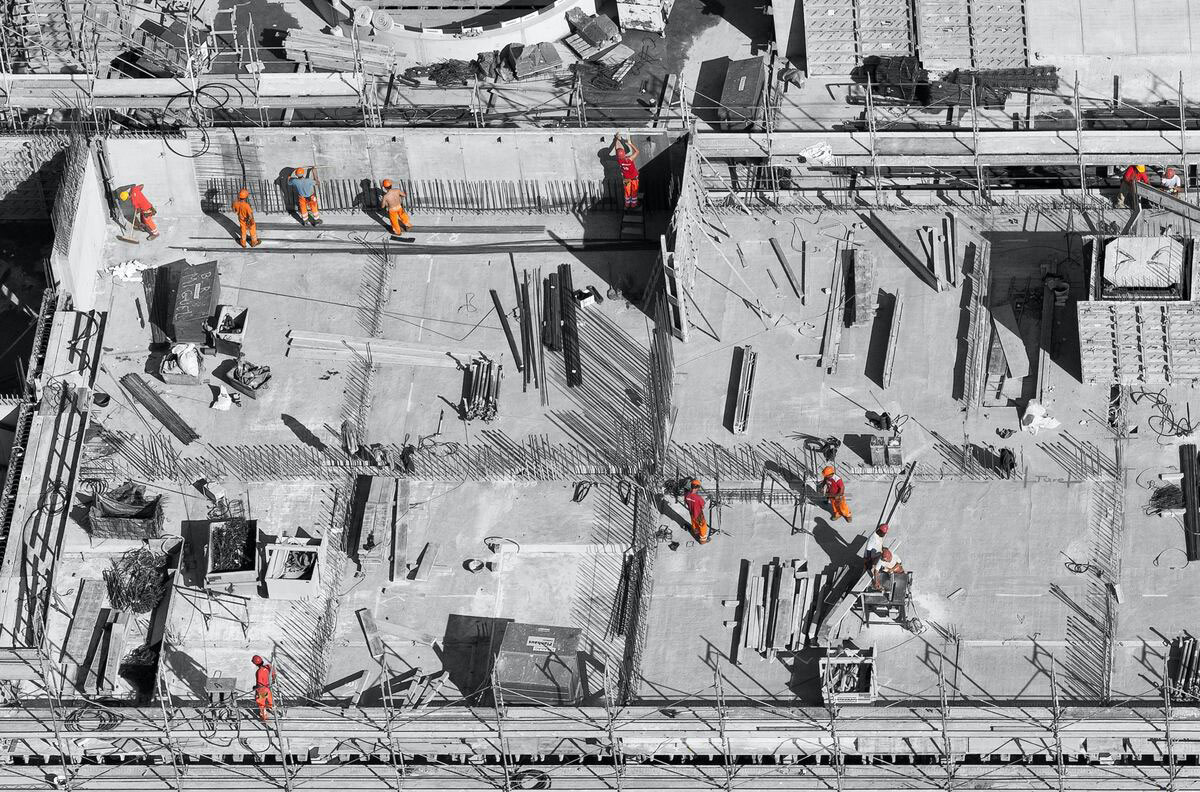
Table of Contents
Current State of Construction Site Safety
Construction industry professionals are extremely concerned about and working to continuously improve the existing condition of construction site safety. There have been significant changes in recent years as a result of technological breakthroughs, raised awareness of safety concerns, and changing regulations.
- Increased Emphasis on Safety Culture: The need to build a safety-focused culture within their organizations is something that construction companies are realizing more and more. This culture change entails creating a mindset that places safety first and makes sure that each employee is aware of their responsibility for preserving a safe workplace. A strong safety culture is promoted by safety training, awareness campaigns, and leadership commitment, all of which are crucial.
- Advancements in Technology: The safety of building sites has been transformed by technology. Companies are now able to check the health and safety of their employees, keep an eye on the condition of their equipment, and identify possible risks in real-time thanks to the integration of the Internet of Things (IoT), wearable technology, and real-time monitoring systems. In order to reduce the need for manual, high-risk tasks, risk assessment, and site inspection are also performed using drones and remote-controlled machinery.
- Regulatory Compliance: To keep up with contemporary building techniques, governments and regulatory agencies around the world are constantly revising and improving safety laws. In addition to being required by law, construction businesses have a moral obligation to follow these regulations. Serious fines and reputational harm may come from non-compliance.
- Safety Data Analysis: Artificial intelligence and data analytics are becoming more important components of construction site safety. Businesses can spot trends, locate high-risk regions, and proactively implement preventive actions by evaluating historical safety data. The use of predictive analytics can aid in foreseeing future safety problems.
- Personal Protective Equipment (PPE) Advances: The safety of workers has increased thanks to the creation of more sophisticated and cozy PPE. Modern safety equipment, such as helmets, vests, gloves, and other items, provides superior protection while allowing people to work comfortably.
- Mental Health Awareness: Additionally, the construction sector has started to address employee mental health issues. Physical challenges, long work hours, and high-stress settings can all be detrimental to mental health. To guarantee the general well-being of their employees, businesses are now putting a priority on mental health assistance and awareness programs.
- COVID-19 Pandemic Impact: Construction sites now face new safety obstacles as a result of the COVID-19 outbreak. To slow the spread of the virus, health precautions, social isolation strategies, and routine testing have all become normal procedures. Construction businesses had to change swiftly to maintain project timelines and worker safety.
- Collaborative Efforts: Construction businesses are working more and more closely with trade associations, construction site safety professionals, and other stakeholders to share best practices and advance safety regulations. These coordinated initiatives are designed to improve workplace safety throughout the sector.
Even though there has been a lot of improvement, problems still exist. The challenges that construction businesses encounter in their pursuit of improved safety include resistance to change, budgetary restrictions, and the necessity for continual training and education. However, the current status of construction site safety demonstrates a dedication to ongoing development and a realization of the crucial importance of preserving the lives and general well-being of all industry employees.
Suggested article for reading: IoT in Construction
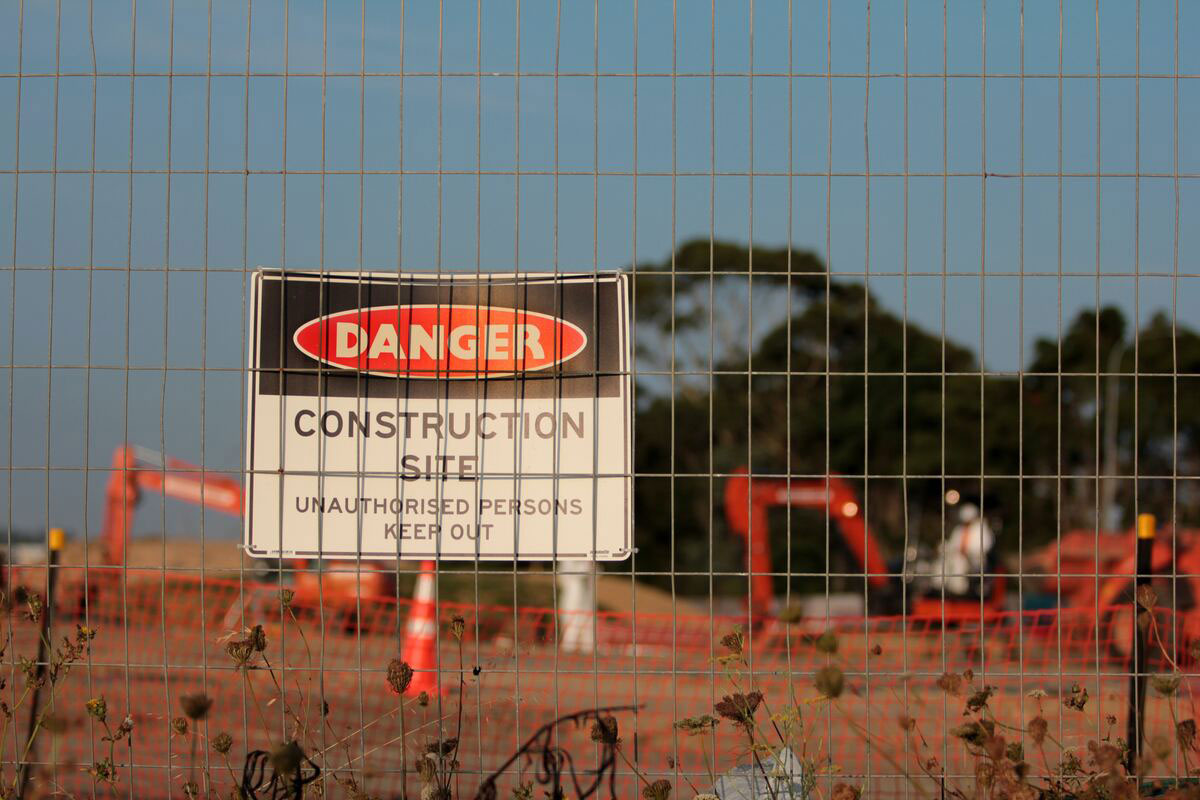
What are Construction Site Safety Risks?
While construction is acknowledged as one of the most hazardous industries, often involving high-risk activities, it is essential for construction site safety managers to be well-informed and vigilant. Their role is to ensure the safety and protection of workers from potential harm. To achieve this goal, construction site safety managers can make use of digital tools, such as mobile construction site inspection apps equipped with tailored checklists for specific risks.
Working at Heights
Working at heights, defined as performing construction work at elevations of 2 meters or more, is a major contributor to preventable work injuries and fatalities worldwide. While avoiding work at heights is ideal, it’s not always feasible for most construction tasks. To help mitigate the risks associated with working at heights, construction site safety managers can utilize digital templates for procedures, safety harness inspections, OSHA scaffold inspections, and ladder inspections.
Falls, Slips, and Trips
Falls, slips, and trips are often associated with working at heights and ladder use. Ladder safety is particularly crucial in preventing these incidents. OSHA mandates ladder inspections before each shift, and construction site safety managers can efficiently meet this requirement by employing mobile inspection apps to proactively identify issues that could lead to work-related injuries.
Moving Equipment
Unlike stationary structures like scaffolds and ladders, construction machinery and equipment used for lifting or moving loads pose significant threats to safety, especially when in operation. Compliance with relevant regional requirements, such as those outlined by OSHA, ASME, and CMAA, is crucial. Digital checklists can assist construction site safety managers in conducting efficient and regular inspections of cranes and lifting equipment.
Noise
Noise as a safety risk in construction may be surprising, but statistics reveal that approximately 17,000 individuals suffer from hearing-related conditions annually due to excessive noise at work. Conducting noise risk assessments is crucial in identifying the sources of such risks and their impact on worker health and safety.
Hand-arm Vibration Syndrome (HAVS)
HAVS is a permanent condition affecting nerves and blood vessels in the hands, primarily due to prolonged use of vibrating tools. In the UK, the Vibration Regulations of 2005 require regular HAVS assessments. Employing digital checklists can aid construction site safety managers in complying with these regulations and protecting workers from HAVS.
Manual Handling
Manual handling, involving lifting, lowering, carrying, and moving objects, is a significant risk factor for musculoskeletal disorders. Risk assessments are essential to safeguard workers from conditions like HAVS, epicondylitis, and rotator cuff injuries.
Collapsing Trenches
Trenching work poses serious safety risks, with trench collapses being particularly deadly. Daily excavation risk assessments ensure that workers enter trenches only when adequate protective measures like sloping, benching, shoring, and shielding are in place.
Electricity
Exposure to electricity is a known safety risk, with electrocutions being highly fatal. Basic electrical safety knowledge is essential for construction workers, and frequent electrical inspections and maintenance checks are crucial for prevention and OSHA compliance.
Asbestos
Asbestos-related diseases cause thousands of workplace deaths each year. A risk assessment is mandatory before any asbestos-related work begins, and construction site safety managers must ensure proper controls and inspections to avoid non-compliance and penalties.
Dust
Silica dust, generated from various construction tasks, can lead to severe health issues, including lung cancer and COPD. Dust risk assessments and compliance with COSHH Regulations are vital to regulate silica dust emissions and protect workers in the construction industry.
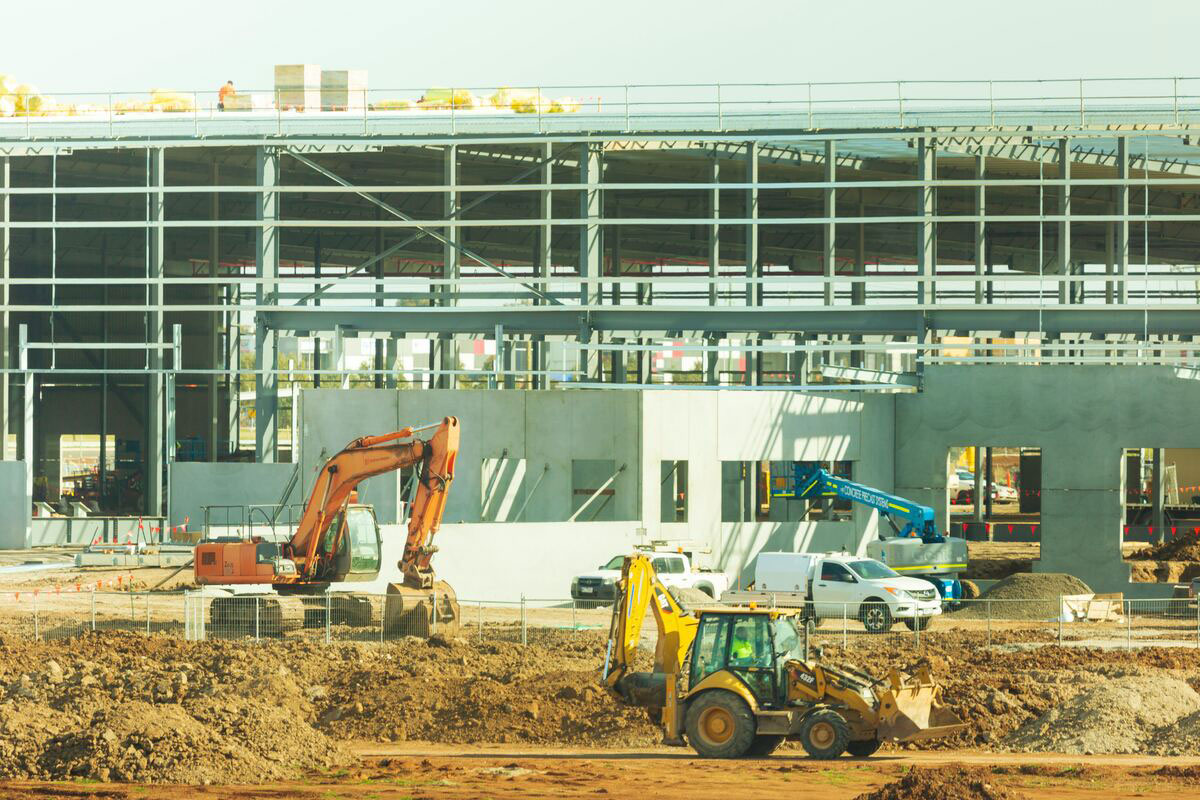
Construction Site Rules and Regulations
To prevent injuries, accidents, and health problems at a construction site, it is essential to adhere to the following general construction site safety guidelines to maintain the safety of both workers and visitors:
- Ensure the Use of Personal Protective Equipment (PPE): All individuals, including workers and visitors, present at the construction site must wear the necessary PPE to minimize exposure to various site hazards. Typical PPE items include goggles, helmets, gloves, ear protection (muffs or plugs), boots, and high-visibility vests or suits.
- Exercise Caution and Abide by Safety Signs: Safety signs play a vital role in alerting and promoting health and safety awareness among employees and visitors. These signs should be strategically placed around the site where needed. Workers should be well-acquainted with the various construction site safety signs, including prohibition signs, mandatory signs, warning signs, safe condition signs, and fire-fighting equipment signs.
- Provide Clear Instructions: Site induction sessions for general contractors should be available on-site to familiarize new workers with site procedures. Conducting regular toolbox talks is an effective way to convey health and safety instructions to the workforce. These talks can occur daily or more frequently as necessary.
- Maintain Site Cleanliness: It is crucial to ensure that the construction site remains tidy and free of debris, dust, loose nails, and stagnant water resulting from excavations and backfilling. Regular cleaning of the construction site is essential to prevent slip and trip hazards.
- Properly Organize and Store Tools: Tools should be organized and stored appropriately, with none left lying around. Lights and power tools should be unplugged when not in use. Adhering to construction site regulations will help prevent tools from causing injuries or damage. Proper organization facilitates easy access and navigation.
- Utilize Correct Equipment for Specific Tasks: Accidents often occur due to the improper use of tools or equipment. It is essential to avoid makeshift tools and instead use the appropriate tools designed for specific tasks, promoting efficiency and safety.
- Establish an Emergency Response Plan: An emergency response plan guides the workforce on how to respond to emergencies such as natural disasters, fires, hazardous material spills, and other incidents. A dedicated team should be responsible for managing emergency situations, providing guidance, and reporting potential hazards, quality concerns, or near misses.
- Implement Safety Measures: To ensure construction site safety, engineering controls such as barriers, fences, and safeguards should be in place. These measures help isolate individuals from hazardous areas with high-voltage electricity or chemicals emitting toxic fumes.
- Perform Pre-Checks on Tools and Equipment: Before commencing work, it is essential to verify that tools and equipment are free from defects or damage to ensure safe operation.
- Promptly Report Issues: Workers should be trained to report defects and near misses on the site as soon as they are identified. Addressing problems promptly is crucial, as it reduces the likelihood of issues worsening and causing accidents or further damage when they are brought to management’s attention.
Osha Construction Site Requirements
What does OSHA require on a construction site? Let’s find out!
To protect the health and safety of workers, the Occupational Safety and Health Administration, or OSHA, establishes detailed guidelines and rules for construction sites in the US. These criteria address a wide range of risks and hazards that are frequently present in construction operations. OSHA’s construction site regulations cover, among other things:
- Fall Protection: OSHA mandates employers to provide fall protection devices, such as guardrails, safety nets, or personal fall arrest systems (PFAS) when workers are exposed to fall dangers since working at heights is common at construction sites.
- Scaffolding Safety: OSHA has guidelines for the design, erection, and application of scaffolds. To avoid falls and other mishaps, scaffold platforms, guardrails, and access must adhere to strict regulations related to construction site safety.
- Hazard Communication: Employers are required to implement a Hazard Communication program to educate workers about potential risks associated with chemicals used on construction sites. This covers worker training, safety data sheets, and labeling.
- Electrical Safety: To avoid electrical dangers, OSHA mandates safe electrical procedures. This covers the usage of grounded outlets, electrical safety equipment, and appropriate equipment upkeep.
- Excavation and Trenching Safety: To avoid cave-ins and other risks, OSHA has requirements for trenching and excavation. This includes ditches and excavations that are properly shored, sloped, or shielded.
- Personal Protective Equipment (PPE): Depending on the risks present, employers must offer and ensure the use of the proper PPE, such as hard hats, safety glasses, hearing protection, and breathing protection.
- Ladder and Stairway Safety: To prevent falls on construction sites, OSHA has particular rules for the layout and use of ladders and stairways.
- Hazardous Materials: Hazardous materials and substances must be handled, stored, and disposed of according to regulations on construction sites.
- Confined Space Entry: In addition to testing for air dangers and having rescue procedures in place, OSHA sets guidelines for entering confined spaces safely.
- Crane and Rigging Safety: Cranes and rigging tools are frequently used on construction sites, and OSHA has rules to ensure their safe use, including routine inspections and operator training.
- Respiratory Protection: When workers are exposed to dangerous dust, fumes, gases, or chemicals, employers are required to provide respiratory protection.
- First Aid and Medical Services: Ample first aid supplies and qualified people must be on hand at construction sites in case of accidents or medical emergencies.
- Recordkeeping: Employers must keep track of occupational illnesses and injuries and notify OSHA of serious instances.
- Training: Construction site safety training, such as danger identification, safe work practices, and emergency procedures, must be provided by employers to employees.
- General Duty Clause: Even if specific OSHA rules do not apply to the hazard, the General Duty Clause requires employers to maintain a workplace free from known risks that could result in serious injury or death.
To create a safer working environment and lower the risk of accidents and injuries, it is crucial for construction employers and employees to be aware of these OSHA regulations, apply them on the job site, and ensure compliance. Employers may be subject to fines and penalties for breaking OSHA regulations.
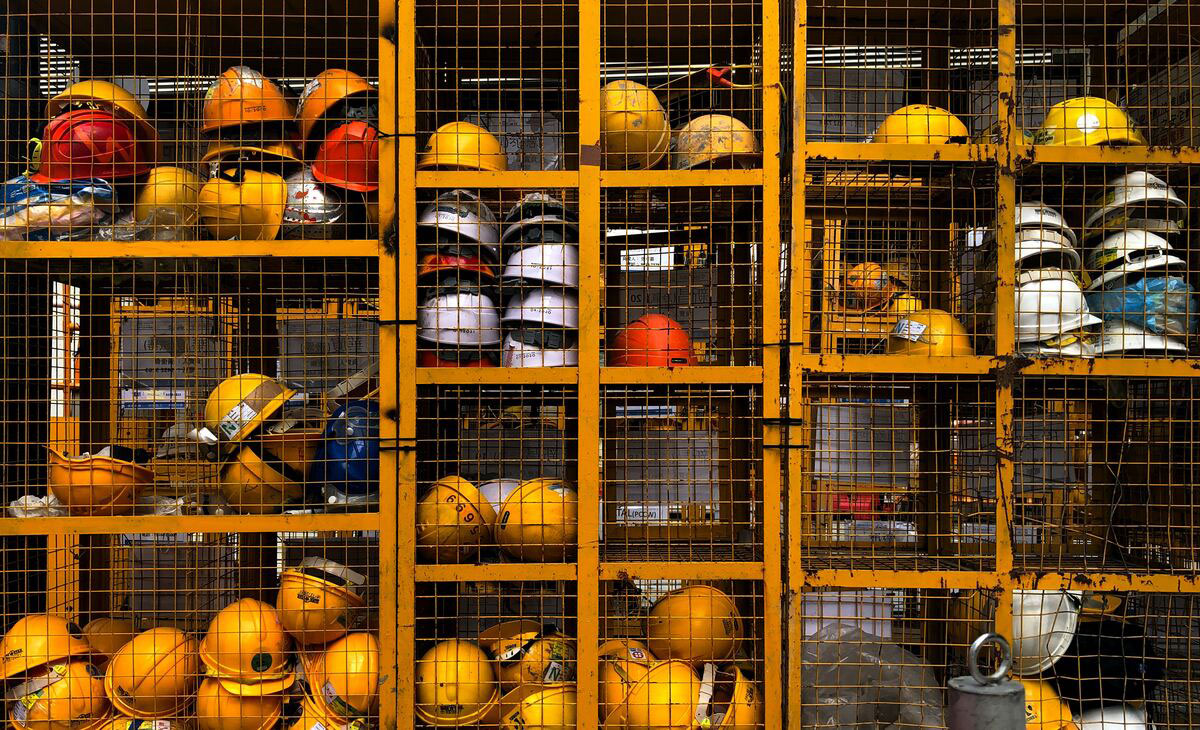
Emerging Trends and Technologies
The construction industry is continually evolving, and so is the field of construction site safety. Here are some of the latest trends and technologies that are making an impact on construction site safety:
- Digital Safety Solutions: The use of digital tools and software for safety management is on the rise. Mobile apps and software platforms are being used for safety reporting, incident tracking, and real-time communication of safety information. These digital solutions streamline safety processes and improve data accuracy.
- Wearable Technology: Wearable devices, such as smart helmets, vests, and wristbands, are equipped with sensors and communication capabilities to monitor workers’ health and safety in real-time. These devices can detect fatigue, monitor vital signs, and provide alerts in case of emergencies. Read more about: Wearable Sensors
- Drones for Safety Inspections: Drones equipped with cameras and sensors are used for aerial safety inspections of construction sites. They can quickly assess site conditions, identify safety hazards, and provide visual data for safety analysis. Read more about: Drones in Construction
- Virtual Reality (VR) and Augmented Reality (AR): VR and AR technologies are used for safety training and simulations. Workers can practice safety procedures in virtual environments, and AR can overlay safety information onto the physical site, providing real-time guidance and hazard alerts. Reade more about: Augmented Reality in Construction | Virtual Reality in Construction
- IoT Sensors: Internet of Things (IoT) sensors are deployed on construction sites to monitor environmental conditions, equipment status, and worker movements. These sensors provide data for safety analytics and can trigger alerts in case of abnormal conditions. Read more about: IoT Sensor
- Artificial Intelligence (AI): AI is used for predictive construction site safety analytics. Machine learning algorithms can analyze historical safety data to identify patterns and predict potential safety risks. AI-powered cameras can also detect safety violations, such as workers not wearing PPE. Read more about: AI in Construction
- Biometric Authentication: Biometric technology, such as fingerprint and facial recognition, is used for access control and time tracking. This ensures that only authorized personnel can access the site and helps track worker attendance.
- Modular Safety Solutions: Prefabricated safety solutions, such as modular guardrails and barriers, are gaining popularity. These solutions can be quickly installed and reconfigured to adapt to changing site conditions, enhancing safety.
- Exoskeletons: Exoskeletons are wearable devices that support and assist workers in physically demanding tasks. They reduce the risk of musculoskeletal injuries and fatigue, particularly for tasks involving heavy lifting.
- Safety Training Apps: Mobile apps are used for on-site safety training and toolbox talks. They provide access to safety training materials, videos, and quizzes, allowing workers to refresh their knowledge regularly.
- Drone-Based Safety Monitoring: Drones equipped with thermal cameras can monitor site temperatures, detect hotspots, and assess the risk of fires. This technology enhances fire safety on construction sites. Reade more about: Construction Monitoring
- Safety Data Analytics: Advanced data analytics tools are used to analyze large volumes of safety data. This allows construction companies to identify trends, benchmark safety performance, and make data-driven decisions to improve safety.
- Blockchain for Safety Documentation: Blockchain technology is used to securely store and manage safety documentation, ensuring the integrity and traceability of safety records. Reade more about: Blockchain in Construction
- Autonomous Vehicles: Autonomous vehicles and equipment are being used for safer material handling and transportation on construction sites. These vehicles can operate in hazardous areas without putting human operators at risk.
- Noise-Canceling and Safety Helmets: Safety helmets with built-in noise-canceling technology protect workers’ hearing while also providing communication capabilities for better coordination and safety alerts.
As construction site safety becomes increasingly digital and data-driven, the industry is better equipped to prevent accidents, identify safety trends, and continuously improve construction site safety practices. The adoption of these trends and technologies can significantly enhance construction site safety and protect the well-being of workers.
What are Common Safety Hazards on a Construction Site?
A construction site encompasses any piece of land where building construction or repairs are in progress. Workers on construction sites often operate heavy tools and machinery, perform tasks at elevated heights, and are exposed to hazardous materials. Due to the nature of this work, construction sites can be inherently perilous.
Working at Heights
The Health and Safety Executive (HSE) releases annual statistics detailing the most common causes of health issues and accidents among workers in the UK. Among these statistics, roughly a quarter of worker fatalities result from falls from significant heights, making working at heights the leading cause of fatal injuries for workers.
Employees who work at heights must undergo appropriate training. This training should cover various equipment and surfaces, including safe practices for working on scaffolding, ladders, and roofs.
The law mandates that employers assess the risks associated with working at heights and develop a comprehensive plan to ensure all work is carried out safely. Workers must receive proper training and be aware of the construction site safety protocols for working at heights.
Effective planning and supervision are crucial for working at heights, and specific measures and precautions should be taken:
- Avoid working at heights whenever possible. If a task can be completed at ground level, it should be.
- Use equipment with added construction site safety measures to minimize the risk of fatal falls, such as scaffolds equipped with double guardrails.
- Minimize the consequences of a fall by providing construction site safety nets and other protective measures.
Moving Objects
Construction sites are dynamic environments where hazards can increase as construction progresses. Various moving objects, including overhead lifting equipment, supply vehicles, and heavy machinery, traverse uneven terrain on these sites.
Prioritizing risk reduction is paramount, and workers should:
- Avoid working near moving objects.
- Remain vigilant of their surroundings, especially in cases where objects lack lights or alarms.
- Wear Personal Protective Equipment (PPE), such as high-visibility jackets, to enhance visibility.
Slips, Trips, and Falls
Slips, trips, and falls are common hazards in nearly any environment, but they are particularly prevalent on construction sites due to uneven terrain, structures at different stages of construction, and the presence of materials.
HSE reports that thousands of construction workers suffer injuries annually due to slips and trips, many of which could be prevented through effective management of work areas and access routes, including stairwells and footpaths.
Those overseeing construction sites must manage them efficiently to ensure worker construction site safety. Risks should be reported and addressed promptly to reduce the likelihood of injuries.
Some causes of slips and trips, along with prevention measures, include:
- Uneven surfaces: Address these issues by designating clearly marked walkways, maintaining good footing conditions, and providing adequate lighting.
- Obstacles: Reduce the risk of tripping over obstacles by maintaining tidy work and storage areas and designating specific locations for waste collection.
- Trailing cables: Whenever possible, use cordless tools. If not feasible, route cables at elevated levels to minimize tripping hazards.
- Wet or slippery surfaces: Apply appropriate treatments, such as stone for muddy surfaces or grit for icy ones, and clearly mark slippery areas. Workers should wear footwear with good traction.
Noise
Construction is inherently noisy, posing a common hazard. Prolonged exposure to loud, repetitive noise can lead to long-term hearing problems, including deafness. Noise can also serve as a dangerous distraction that diverts workers’ attention from their tasks, potentially causing accidents.
Employers bear the responsibility of conducting comprehensive noise risk assessments and providing appropriate PPE where necessary.
Hand-Arm Vibration Syndrome (HAVS)
Hand-Arm Vibration Syndrome is a painful and debilitating condition affecting blood vessels, nerves, and joints. It often results from the prolonged use of hand-held power tools and ground-working equipment.
HAVS is preventable, but once damage occurs, it is permanent. HSE reports that nearly 2 million people are at risk of developing HAVS. Proper protection and maintenance of vibrating tools are essential.
Material and Manual Handling Materials and equipment are frequently lifted and moved on construction sites, either manually or with equipment. Regardless of the method, handling materials carries risks.
Workers performing manual handling duties should receive adequate training. Those using lifting equipment must also be trained and tested on safe equipment operation.
Collapsing Trenches
Trench collapses pose a common risk on construction sites, endangering workers inside. Additionally, buildings under construction or demolition may unexpectedly collapse, resulting in serious injuries or fatalities.
Precautions against trench collapses should be taken before work commences, including proper trench support, regular inspections, and ensuring full security.
Asbestos
Asbestos, a group of naturally occurring fibrous minerals, poses severe health risks when disturbed or damaged, releasing dangerous fibers into the air. Inhalation of these fibers can lead to fatal diseases, including lung cancer, asbestosis, and pleural thickening.
Asbestos-related diseases claim thousands of lives annually. If asbestos is present on a construction site, workers must be informed and trained on how to handle potential asbestos-containing materials.
Electricity
Exposure to live electrical parts can result in harm, whether through direct contact, indirect contact via conductive objects or materials, or electrical incidents involving equipment or machinery.
Electrical accidents are common on construction sites, with many stemming from contact with overhead or underground power sources and electrical equipment. Proper training and qualifications are vital for those conducting electrical work.
Airborne Fibres and Materials
Construction sites generate substantial dust, often an invisible, fine, and toxic mix of hazardous materials and fibers. This dust poses risks to lung health, causing conditions such as chronic obstructive pulmonary disease, asthma, and silicosis.
Employers are obligated to ensure that protective equipment is not only provided but also used effectively.
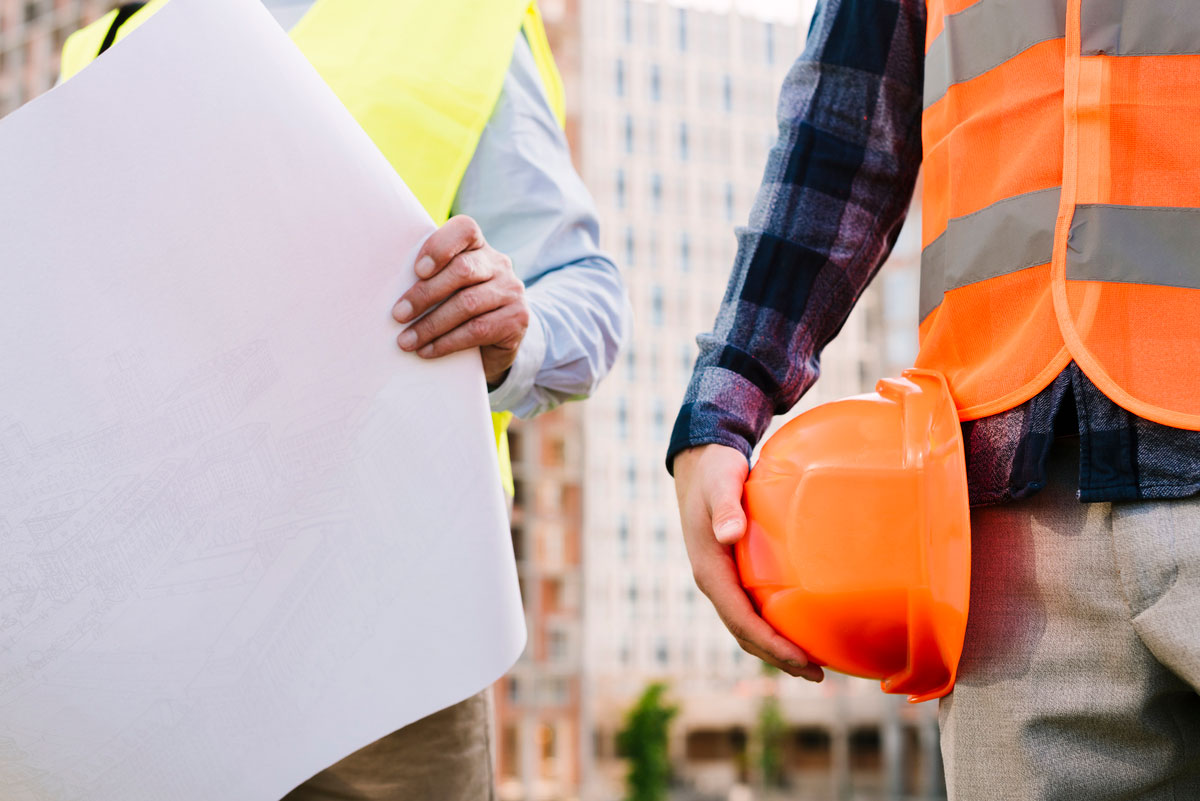
What are the Safety Measures and Prevention in Construction Sites?
Prioritizing worker safety should be the foremost concern for construction companies, even above considerations like speed, cost, and effort. Contrary to what some might think, emphasizing construction site safety doesn’t hinder project progress; instead, it often results in smoother construction operations. Construction tasks can proceed more efficiently when a work environment is secure and protected. Workers equipped with the right training and tools can work more swiftly, and the absence of accidents means no work interruptions. Enhanced construction site safety protocols can also lead to cost savings by reducing fines for OSHA violations, workers’ compensation claims, and insurance expenses.
Ensuring construction site safety doesn’t have to be complex, but it should be comprehensive. This is where a safety culture plays a vital role. You can learn more about what a safety culture entails and how to establish one in your business here.
By ingraining safety as a core value within your company, you guarantee that regardless of the task or the personnel on shift, safety procedures are followed, resulting in fewer accidents and injuries. The following recommendations will bolster your company’s cultural development and simultaneously improve construction site safety performance.
- Personal Protective Equipment (PPE): Supply appropriate personal protective equipment (PPE) to all workers for tasks or jobs that may pose health and construction site safety risks. PPE can mean the difference between a near-miss incident and a fatal accident, and it can even prevent accidents in the first place. OSHA mandates that employers provide PPE to employees at no cost and has specific standards for the types of equipment that should be available.
PPE items may include:
- Hard hats or head protection
- Fall prevention harnesses
- High-visibility clothing
- Steel-toed boots
- Safety goggles or glasses
- Gloves
- Hearing protection
- And more…
While the basic need for PPE is evident, it’s essential to regularly review your equipment inventory. Job sites and industry best practices often have evolving requirements, necessitating periodic assessments of standard needs, unique equipment needs for specific sites and roles, as well as feedback from employees to ensure their confidence in the provided equipment. Additionally, maintain the quality of the equipment and provide thorough training to ensure effective use and self-protection.
- Situational Awareness: Educating your employees about situational awareness is one of the most impactful construction site safety measures you can implement. When your workers are attentive to their surroundings, they can identify potential hazards and construction site safety concerns before they escalate into accidents.
Begin by instructing your teams on what to watch for and how to respond. For instance, an employee with strong situational awareness and hazard identification training might detect a broken guardrail that could fail under stress, while an untrained worker might remain oblivious to the impending accident. Encourage your employees to slow down and stay attentive to their surroundings at all times.
- Safety Training: Training programs are the most effective way to prepare your employees to navigate their work environments safely. Prioritize training for specific job functions, power tools, equipment operation, first aid, and handling hazardous substances. Continuously prepare your workers to respond promptly and effectively to dangerous situations, including both common incidents and potential threats that might not be top of mind. Train employees to execute emergency plans, such as fire evacuations, dealing with adverse weather conditions, or responding to other hazards that pose a threat to your sites.
These training courses should be mandatory for all employees and should be scheduled regularly throughout the year, such as biannually or quarterly for specific courses. Incentives can also be used to motivate employees to actively engage in training.
- Communication: Effective communication is essential for safety in any job, but it becomes even more critical when dealing with the numerous complexities inherent in construction projects. Communication takes various forms on construction sites, including:
- Hazard communication: Clear signage to mark fall hazards, electrocution risks, or other potential dangers and hazardous equipment.
- Emergency communication: Swift contact with all relevant parties to facilitate evacuations or other emergency responses on-site.
- Routine communication: Daily interaction with all employees, stakeholders, and subcontractors to ensure smooth operations.
Ensure you have up-to-date contact information for all your employees and relevant third parties, such as vendors or contractors, to reach them as needed for any communication requirements. Additionally, establish reliable means for your workers to contact you, such as a two-way mass notification system, recognizing that workers on construction sites are likely to encounter hazards first.
- Strong Leadership: A company’s safety culture originates at the top and permeates through the organization. Thus, having a leadership team committed to safety is essential for promoting workplace construction site safety. However, it’s not merely about introducing more construction site safety rules for compliance (although that can be helpful). Effective leadership involves setting an example and fostering a positive environment where employees feel empowered to make safe choices.
Here are a few ways to strengthen your construction site safety leadership:
- Avoid placing blame when accidents occur; instead, seek opportunities for learning and improvement from these incidents.
- Communicate changes to procedures or identified hazards promptly and clearly to all employees.
- Cultivate an open and welcoming space for employees to voice feedback, make requests, and express concerns.
- Address safety issues immediately when they arise.
- Risk Assessments: Ensuring the safety of your construction site begins with identifying specific safety hazards. Tailoring your safety efforts to address your unique risks is more effective than relying on generic safety plans that may not apply to your situation. For instance, a construction crew working on demolishing old buildings faces a higher risk of asbestos exposure compared to a roofing crew on a new construction project, where fall protection should be a priority.
Conduct a thorough risk assessment of your site, considering various tasks, environmental factors like inclement weather

Safety Training and Education
Fundamental elements of workplace safety include safety education and training, which make sure that staff members have the know-how and abilities necessary to safeguard both themselves and others against dangers to their health and safety. These programs are crucial in a number of sectors, including manufacturing, healthcare, construction, and more. Here is a detailed analysis of safety education and training:
1. Purpose of Safety Training and Education: Education and training in construction site safety are essential for the following reasons:
- Accident Prevention: The main objective is to avoid occupational mishaps, diseases, and injuries. Employees who have received the appropriate training can identify potential risks and take precautions.
- Legal Compliance: There are laws in several nations requiring employers to offer safety training. Along with being required by law, compliance with these laws is also morally right.
- Skill Development: Employees get the ability to operate properly, use safety equipment, and handle crises through learning the skills and knowledge necessary.
- Promoting Construction Site Safety Culture: An organization’s safety culture is fostered by safety training. Employees are more inclined to prioritize safety in their daily jobs when it becomes a fundamental value.
2. Types of Safety Training: Depending on the sector, the workplace, and the particular threats, safety training can take many different forms. Typical forms of safety education include:
- General Safety Orientation: New hires frequently go through general construction site safety orientation, learning about the company’s safety regulations, emergency protocols, and fundamental hazard awareness.
- Job-Specific Training: Employees receive training that is customized for their unique positions and responsibilities. For instance, fall prevention training may be provided for construction workers, while infection control training may be provided for healthcare personnel.
- Emergency Response Training: This covers CPR (Cardiopulmonary Resuscitation), first aid, and evacuation protocols. Employees receive training on efficient emergency responses.
- Hazardous Materials Training: Employees who handle hazardous materials are trained in safe handling, storage, and disposal techniques.
- Equipment and Machinery Training: Employee training reduces the likelihood of accidents by teaching workers how to use tools, machinery, and equipment safely.
3. Key Elements of Safety Training: Effective construction site safety training programs have the following components in common:
- Content Relevance: Training materials must be pertinent to the workplace and the particular dangers that workers can face.
- Engagement: Learning and retention can be improved through interactive and interesting training techniques including practical exercises and real-world situations.
- Assessment: Quizzes or practical assessments used to gauge employees’ comprehension of safety concepts assist in pinpointing any areas that may require more training.
- Regular Updates: To account for evolving workplace conditions, rules, and dangers, construction site safety training should be continuously reviewed and revised.
- Accessible Resources: To supplement their training, workers should have access to safety manuals, posters, and other materials.
4. Benefits of Safety Training and Education: Investing in construction site safety education and training has a number of advantages:
- Reduced Accidents: Employees who have received the proper training are less likely to be engaged in accidents, which results in fewer illnesses and injuries.
- Improved Morale: Generally speaking, happier and more productive employees are those who feel safe at work.
- Legal Compliance: Organizations benefit from avoiding fines and legal ramifications by complying with safety rules.
- Lower Costs: Reduced workers’ compensation claims, medical costs, and insurance premiums are brought on by fewer accidents and injuries.
- Enhanced Reputation:Companies with a reputation for putting construction site safety first frequently attract top personnel and customers.
5. Challenges in Construction Site Safety Training: Despite its significance, safety training can run into a few problems:
- Language and Cultural Barriers: Workplaces with a variety of languages and cultures may need specialized training to ensure comprehension.
- Training Costs: Effective training may be expensive to develop and implement, especially for smaller businesses.
- Resistance to Change: Some workers can be reluctant to accept new safety procedures, especially if they think they would be time- or labor-intensive.
- Training Frequency: Maintaining continuing training programs can be difficult because, over time, staff may forget or grow complacent.
For the establishment of a secure and healthy workplace, construction site safety education and training are crucial. They equip workers with the knowledge and abilities necessary to avert mishaps, lessen injuries, and advance a culture of safety. Organizations that place a high priority on construction site safety training not only adhere to rules but also reap the rewards of lower costs, higher morale, and a good reputation.
Challenges in Implementing Safety Measures
Workplace construction site safety is a primary concern for businesses in various sectors. Here are the top ten challenges often encountered in ensuring workplace construction site safety:
- Insufficient Training: In many workplaces, accidents stem from employees not receiving adequate training to handle tools, machinery, or processes they encounter. This lack of training can result from budget constraints, rapid onboarding, or managerial oversights. This knowledge gap can be particularly hazardous in industries with complex or inherently dangerous equipment. To address this issue, companies should invest in comprehensive training programs that are regularly updated and tailored to their specific workplace needs.
- Lack of Proper Personal Protective Equipment (PPE): Personal Protective Equipment serves as the final line of defense against workplace hazards. When employees lack access to the appropriate PPE or are not educated on its correct usage, their risk of injury or exposure to harmful substances significantly rises. Reasons for this inadequacy can include budget limitations, negligence, or supply chain issues. Employers should conduct risk assessments to determine the necessary PPE, ensure its availability and good condition, and educate employees on consistent and proper use.
- Falling Hazards: Falls are one of the leading causes of workplace injuries. They can range from minor trips over misplaced items to severe falls from heights, particularly in construction or warehouse settings. Even a minor oversight, such as an unplugged cord or a wet floor, can result in a serious injury. Employers should establish stringent housekeeping standards and conduct regular inspections to minimize this risk. Elevated workspaces should have guardrails, signage, and fall protection gear, with training sessions on navigating these environments safely.
- Ergonomic Challenges: Employee interaction with their work environment significantly impacts their well-being. Repetitive motions, like typing or assembly line work, and prolonged periods of sitting can lead to musculoskeletal disorders. The challenge lies in recognizing these hazards, as the harm often accumulates over time rather than occurring in a single incident. Addressing ergonomic challenges involves redesigning workstations, providing ergonomic equipment, educating employees on proper posture, and encouraging breaks. Task rotation can also help minimize repetitive strain.
- Poor Housekeeping: A disorganized workplace isn’t just unsightly; it poses construction site safety risks. Clutter can obstruct pathways and hide hazards like spills or tools. Neglecting housekeeping over time can create an environment where accidents are likely to happen. Proper housekeeping involves organizing tools and materials, ensuring clear walkways, and promptly addressing spills or debris. Regular audits and a culture that values tidiness can significantly reduce the risks associated with poor housekeeping.
- Chemical Exposure: Workplaces that handle or store chemicals face inherent risks of workforce exposure through skin contact, inhalation of fumes, or accidental ingestion. Potential dangers range from mild irritations to severe health complications, including respiratory problems and chemical burns. Mitigating these risks requires meticulous attention to detail, such as clear labeling of chemicals, proper storage protocols, and guidelines for safe handling, including the use of appropriate PPE. Adequate ventilation systems are also necessary to disperse harmful fumes and reduce the risk of inhalation.
- Electrical Hazards: Electrical systems are prevalent in modern workplaces, powering everything from lights to machinery. When these systems are not properly maintained or used, they pose significant risks, such as fires, power outages, equipment damage, or electrocution. Regular inspections of electrical systems, employee training on correct equipment usage, and instilling respect for electrical construction site safety protocols are vital to prevent accidents related to these hazards.
- Lack of Emergency Preparedness: Failure to prepare for emergencies can have dire consequences. Without a well-structured and practiced emergency response plan, even minor incidents can escalate, resulting in injuries, property damage, or loss of life. Employers must develop comprehensive plans covering various potential emergencies, such as fires or natural disasters. These plans should detail evacuation routes, assembly points, and procedures for aiding injured employees. Regular drills ensure all employees are familiar with these procedures, reducing panic and confusion during emergencies.
- Mental Health and Stress: The modern workplace involves both physical labor and cognitive/emotional activity. If unaddressed, mental health challenges can manifest in various ways, affecting individual and collective productivity. Chronic stress can lead to burnout, reduced job satisfaction, and an increased likelihood of errors. Employers should create a supportive environment where employees feel valued and heard. This includes addressing potential sources of workplace stress, providing resources for mental health support, and encouraging open dialogues about well-being.
- Inadequate Reporting and Communication: Effective communication is crucial for maintaining a safe work environment. When employees lack a clear channel to report construction site safety concerns or incidents, many potential hazards may remain undetected until it’s too late. An opaque or intimidating reporting system can discourage individuals from voicing their concerns. Therefore, companies should ensure transparent, accessible, and non-punitive mechanisms for employees to report issues. Regular feedback loops and open-door policies can also foster a culture of open communication, allowing problems to be identified and rectified promptly.
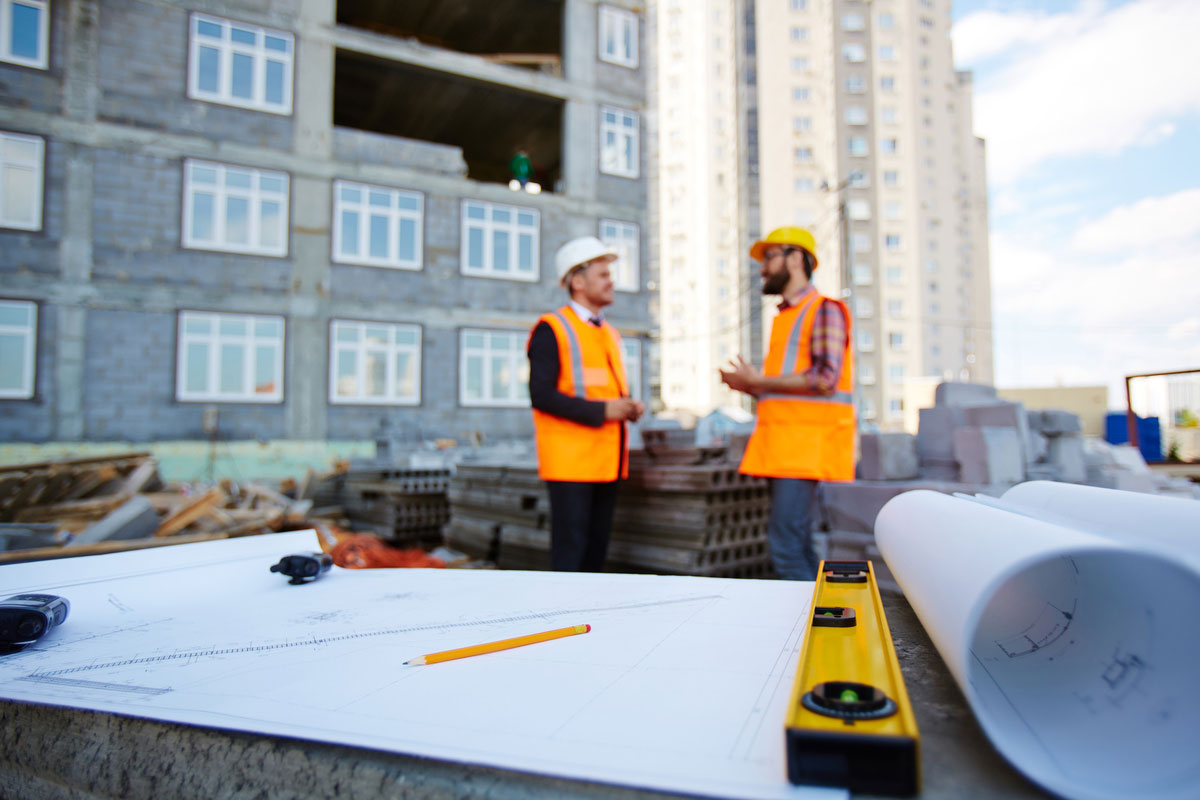
Future Outlook
Looking ahead, the construction industry will continue to evolve in its approach to construction site safety. The integration of technology, particularly in the form of wearable devices, drones, IoT sensors, and artificial intelligence, will play a pivotal role in further enhancing safety on construction sites. These technologies will provide real-time data and insights, enabling proactive hazard identification and risk mitigation.
Safety training and education will remain a cornerstone of construction site safety, with an increasing focus on personalized, job-specific training that equips workers with the skills and knowledge necessary for their roles. Online and virtual training platforms will become more prevalent, making construction site safety education accessible to a broader audience.
Regulatory bodies are likely to continue updating and strengthening construction site safety regulations to keep pace with industry advancements and emerging risks. Companies will need to stay vigilant and ensure compliance with these evolving standards.
Additionally, the construction industry will see a greater emphasis on sustainability and environmental safety, including the safe handling and disposal of hazardous materials and the reduction of emissions and pollution. Integrating sustainability practices into construction site safety will become essential for long-term viability.
In conclusion, the future of construction site safety will be marked by a harmonious blend of technology, education, and a steadfast commitment to the well-being of workers. As construction companies embrace these advancements and foster a culture of safety, they will not only protect lives but also enhance efficiency, reduce costs, and strengthen their reputation within the industry and beyond.
Conclusion
In conclusion, construction site safety is a paramount concern in the construction industry, and it goes beyond mere regulatory compliance. Prioritizing construction site safety not only protects workers’ lives but also offers numerous advantages to businesses, including reducing safety risks, avoiding financial burdens, and building trust among stakeholders.
Construction site safety is a multifaceted challenge that encompasses various risks, including working at heights, falls, slips, and trips, moving equipment, noise, hand-arm vibration syndrome, manual handling, collapsing trenches, electricity, asbestos, and dust. Addressing these risks through proper risk assessments, preventive measures, and safety training is essential to ensure the well-being of workers.
To enhance construction site safety, it’s crucial to follow safety measures and preventive strategies. These include providing personal protective equipment (PPE), promoting situational awareness, conducting comprehensive construction site safety training and education, fostering effective communication, demonstrating strong leadership, conducting risk assessments, and maintaining a safety culture within the organization.
Furthermore, the construction industry is embracing emerging trends and technologies such as digital safety solutions, wearable technology, drones for construction site safety inspections, virtual reality, IoT sensors, artificial intelligence, and more. These innovations are helping construction companies enhance construction site safety practices and protect workers in an increasingly digital and data-driven environment.
Suggested articles for reading:
important construction technology in 2024
7 Important Building Technology Ideas for 2024
Resources:
Safety Culture | Occupational Safety and Health | American Society of Safety Professionals | MSC Safety Solution | Safety by Design | Procore | Hard hat training | OSHA | High Speed Training | Alert Media | hse
For all the pictures: Unsplash | Freepik





